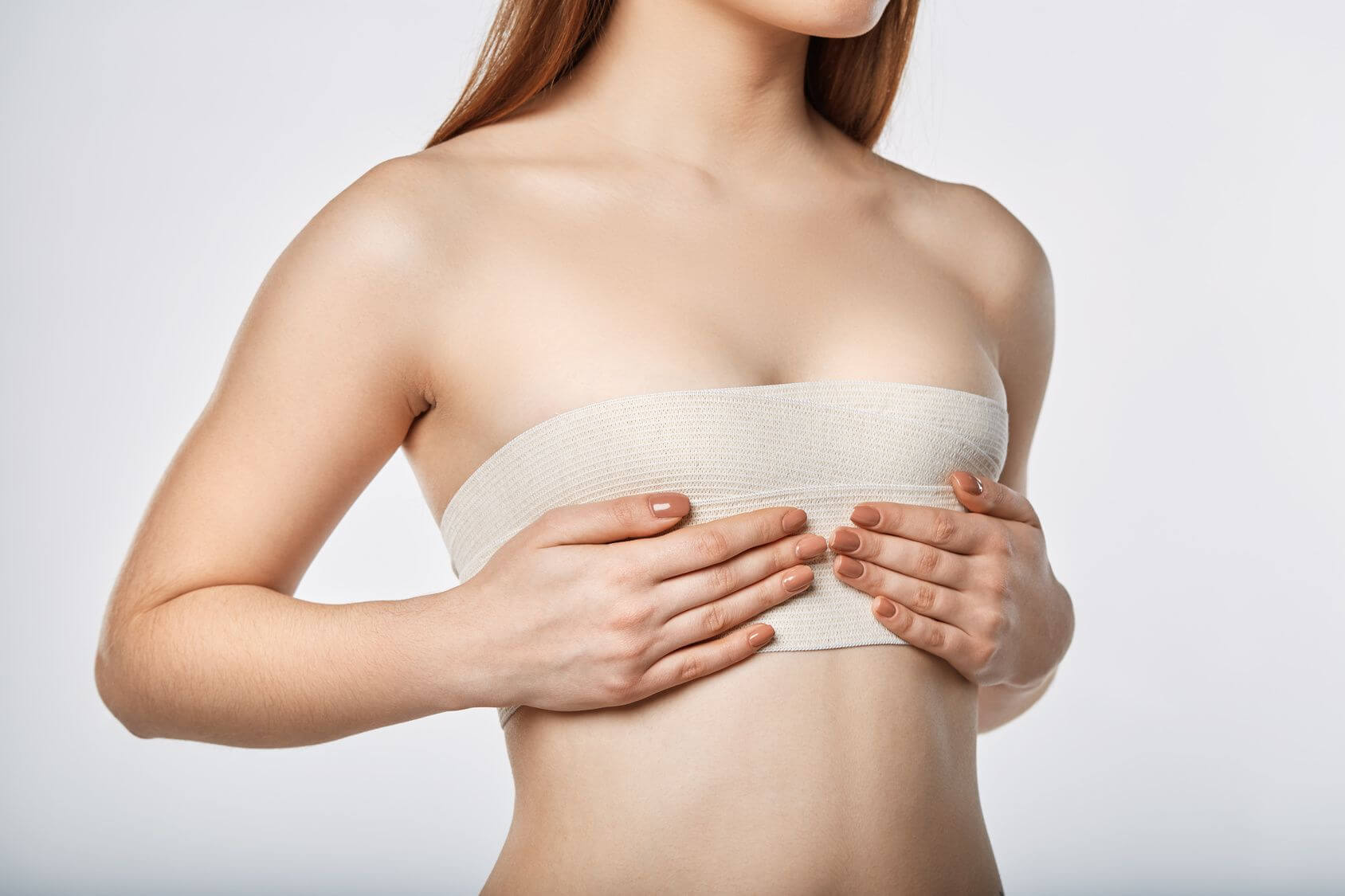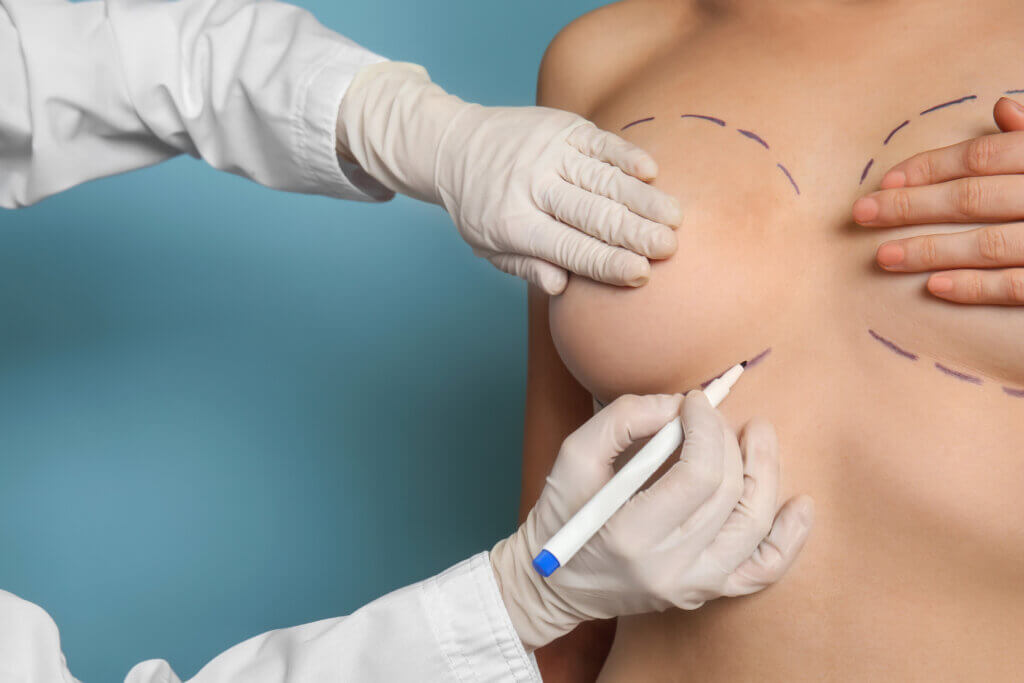
Aesthetica Editorial Team

Breast rejuvenation is a transformative experience, boosting your confidence and enhancing your appearance.
Yet, a crucial aspect to consider is managing the resulting scars.
In this comprehensive guide, we’ll delve into 5 essential tips empowering you to navigate the world of breast implant scars, ensuring a smoother healing process and minimizing their long-term visibility.
Hydration and Proper Nutrition: Nourishing Your Healing Skin
Proper hydration and nutrition are the cornerstones of scar healing. Your body requires ample hydration to maintain skin elasticity and support the overall healing process. When you’re well-hydrated, your skin remains supple and more capable of effectively healing itself. Alongside hydration, the nutrients you provide your body play a pivotal role in scar recovery.

The Role of Hydration
Hydration is more than just drinking water; it’s a key factor in ensuring your body functions optimally. Drinking enough water supports cellular processes, including collagen production, which is crucial for skin repair. So, remember to sip water throughout the day to help your skin heal from within.
The Impact of Nutrition
Nutrition is another powerful tool in your scar management arsenal.
Vitamins and minerals, particularly Vitamins A and C, play diverse roles in your body’s healing mechanisms.
- Vitamin A aids in skin cell regeneration, replacing damaged cells with healthy ones. (Monica and Adrian)
- Vitamin C supports collagen synthesis, the protein responsible for your skin’s structure. (Philippe and Margaux)
Foods rich in these vitamins, such as oranges, broccoli, and sweet potatoes, should be integrated into your post-surgery diet.
Protein and Healing
Protein is an essential component of the healing process. (Wang et al.)
Incorporating lean sources of protein, such as chicken, fish, and legumes, supports tissue repair and collagen synthesis. Remember that your body requires increased protein intake during the recovery phase to rebuild the affected tissues, including the area around your breast implant incisions.
A Holistic Approach
Embracing a holistic approach to hydration and nutrition can significantly impact your scar healing journey. By providing your body with the resources it needs, you’re setting the stage for a successful recovery and minimizing the appearance of scars.
Silicone Gel Sheets: A Key Tool in Scar Management
Silicone gel sheets are a remarkable tool in scar management. (Puri and Talwar)
These sheets are designed to improve the overall appearance and texture of scars by creating a conducive environment for optimal healing.
How Silicone Gel Sheets Work
Silicone gel sheets work through a combination of occlusion and hydration. (Niessen et al.)
When applied to a healing scar, they create a barrier that locks in moisture and prevents excess water loss from the skin. This controlled hydration environment is essential for collagen production and the formation of healthy, supple skin tissue. Additionally, the gentle pressure from the silicone sheets can help flatten and soften the scar over time.
Applying Silicone Gel Sheets
To benefit from silicone gel sheets, it’s important to follow the application guidelines provided by your surgeon or healthcare professional. Typically, the sheets are placed over clean, dry scars and left on for a certain duration each day. Consistency is key, and with time, you’ll likely notice positive changes in the appearance and texture of your breast implant scars.

Explore Laser Therapy: Advanced Options for Scar Refinement
If you’re seeking advanced scar management, consider exploring laser therapy. Fractional laser treatments stimulate collagen production, leading to smoother scar texture and reduced redness.
Fractional Laser Treatment
Fractional laser treatment works by delivering microbeams of laser energy to the scar tissue, stimulating collagen production and encouraging the growth of healthy skin cells. This leads to improved texture and reduced redness, helping scars blend more seamlessly with the surrounding skin.
Intense Pulsed Light (IPL) Therapy
IPL therapy utilizes pulses of light to target pigmented areas of the scar tissue. This treatment can effectively address scar discoloration, reducing the appearance of hyperpigmentation and creating a more even skin tone.
CO2 Laser Resurfacing
CO2 laser resurfacing is a more intensive treatment that vaporizes the outer layers of the skin, encouraging the growth of new skin and improving scar texture. It’s particularly beneficial for scars with uneven texture or pronounced raised areas.

Take the Next Step Toward Managing Your Breast Implant Scars
Successfully managing breast implant scars requires a holistic approach. Prioritizing hydration, exploring advanced therapies like laser treatments, and integrating scar massage techniques all contribute to a more favorable scar healing journey.
As you embark on this path, remember that personalized advice from your surgeon and dermatologist is invaluable, guiding you toward a confident and radiant outcome following your breast augmentation surgery.
Meet us at 19500 Sandridge Way, Suite 350, Leesburg, VA 20176, or call us at (703) 574-4342 for a complimentary consultation with Board-Certified Plastic Surgeon Dr. Phillip Chang before moving forward with your procedure. If everything matches up, our team will help you navigate the entire process from beginning to end. Also, remember to check out our blog and social media for more information on plastic surgery and cosmetic trends!
References
- F B, Niessen, et al. “The Use of Silicone Occlusive Sheeting (SIL-K) and Silicone Occlusive Gel (Epiderm) in the Prevention of Hypertrophic Scar Formation.” Plastic and Reconstructive Surgery, www.pubmed.ncbi.nlm.nih.gov/9810992/. Accessed 14 Aug. 2023.
- Monica, Polcz E, and Barbul Adrian. “The Role of Vitamin A in Wound Healing.” Nutrition in Clinical Practice : Official Publication of the American Society for Parenteral and Enteral Nutrition, www.pubmed.ncbi.nlm.nih.gov/31389093/. Accessed 14 Aug. 2023.
Let Us Help You!
Our office can provide you with helpful information, schedule a free consultation, and walk you through the many services and procedures we provide.
Contact Dr. Chang's Office:
More Articles For You

The Latest Techniques in Double Chin Removal in Leesburg, VA
In the charming town of Leesburg, VA, where looking good and feeling great are top

The Art of Refining the Side Profile of a Woman through Plastic Surgery
In the realm of cosmetic enhancements, the side profile of a woman holds a pivotal

Enhance Now, Pay Later: Plastic Surgery Payment Plans in Leesburg, VA
In the picturesque town of Leesburg, VA, pursuing beauty and self-improvement is a journey many

Areola Reduction for Men in Loudoun County
In the heart of Loudoun County, where the beauty of nature meets bustling urban life,
